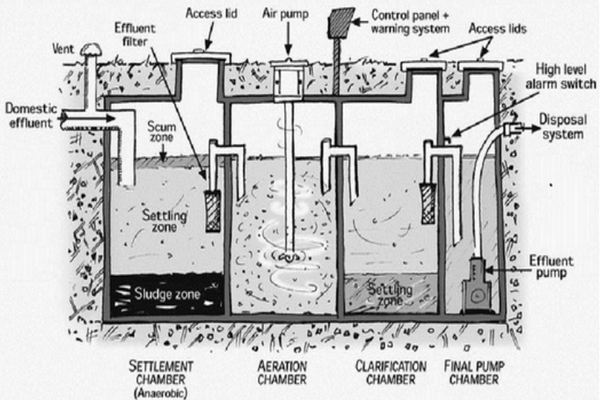Sewage Treatment
 Modern Aerated Wastewater Treatment Systems (AWTS) essentially uses natural processes to reduce the level of harmful bacteria and other water borne pathogens in sewage effluent.
Modern Aerated Wastewater Treatment Systems (AWTS) essentially uses natural processes to reduce the level of harmful bacteria and other water borne pathogens in sewage effluent.
System uses both anaerobic and aerobic zones to process and clarify sewage wastewater.
The primary chamber principally allows solids to settle to the bottom with some scum floating above the primary effluent. Anaerobic processes (without air) begin with particular bacteria that break down the solids into a sludge.
The decanted effluent between these layers siphon through to an aerated chamber and uses aerobic bacteria attached to media to further absorb harmful bacteria and other material in the effluent water.
Settlement is an important part of the process to allow suspended particles to drop out of water and settle to the bottom before the water disinfection occurs to neutralise the viruses and harmful pathogens not otherwise affected in the natural process.
To ensure the neutralisation of pathogens and e-Coli a clarification area and time are essential for chemical disinfection to have effect. Non-chemical UV is increasingly considered to aid final disinfection for reuse of this water source for non-potable applications and ecological discharge.
The removal from the treatment device still benefits from absorption into further natural biological in-soil process or from vegetation uptake, stream ecology, transpiration or sunlight breakdown.
The whole process is based on natural biological treatment, careful decanting and assisted mechanical measures for flow requirements and water quality discharge assurance.






 LinkedIn
LinkedIn WeChat
WeChat

